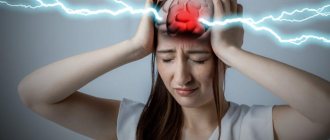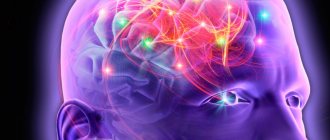A vegetative state is a phenomenon in which the functioning of the cerebral cortex is significantly impaired. In extreme situations, its complete death is possible. In this condition, the patient loses the ability to perform higher nervous activity, that is, to think and remember information. In addition, neurological functions for which the cerebral cortex is responsible are lost.
For example, a person cannot speak. The patient retains the basic functions that are responsible for maintaining life. That is, he can breathe, normal vascular tone is maintained, and the heart rhythm is not disturbed. In addition, the sleep-wake cycle is preserved. At the same time, the person does not realize what is happening to him, and also does not understand what surrounds him.
Appalic syndrome
You can often hear the expression, even in scientific circles, that “a person has come to his senses from a protracted (severe) coma,” however, this formulation of the question is fundamentally wrong, because a person can only emerge from a long coma into a vegetative state and nowhere else. Coma is a deep sleep of the brain, but it cannot be a permanent factor; it must end.
With minor head injuries or non-traumatic situations, recovery from a coma is indeed possible without any additional intermediate phases. But the more difficult and serious the event that led to the loss of consciousness, the more thorny the path of return will be.
Diagnostic methods
The diagnosis is made by a neurologist based on characteristic signs: lack of awareness, preservation of unconditioned reflexes, sleep-wake phases. To assess the metabolism of bioelectrical activity of the central nervous system and cerebral hemodynamics, hardware diagnostic methods are required:
The study of evoked potentials can demonstrate anatomical interruption of cerebral tracts. It is worth considering that the resulting picture will be heterogeneous;- Electroencephalography is capable of recording paroxysmal bursts, delta and theta rhythms, and occasionally an alpha rhythm close to normal may appear;
- Ultrasound scanning of intracranial vessels helps to clarify the state of vascular blood flow. With VS, there is difficulty in perfusion and impaired venous outflow;
- Magnetic resonance imaging shows nonspecific changes in soft tissues: an increase in the volume of the ventricles and subarachnoid space, signs of atrophy. With a high degree of probability, the degree of atrophy makes it possible to make an expected prognosis about exit from the VS;
- PET allows you to detect the degree of decrease in metabolic processes in the cortex. In persistent vegetative states it decreases by 50%, and in permanent ones by 30-40 percent. During activation of the multifunctional area of the associative cortex, the exit from the VS begins.
To differentiate VS from coma, it is necessary to check the integrity of unconditioned reflexes, the change in sleep-wake phases and the presence of eye opening under light and sound influences. In coma, these signs are absent.
Phases of the vegetative state
Conventionally, the vegetative state of a person after a coma (which means after the transition from the acute period to the expectant period) is divided into two successive phases:
- persistent - when the appalic form lasts less than 30 days and doctors give the most optimistic forecasts;
- permanent - the period of stay in a vegetable-like position is more than a month.
If we compare the vegetative state of a person with a coma, then, of course, this situation can be called relative consciousness, but is the quality of the “vegetative” consciousness always the same? It turns out not.
Forms of violation
Taking into account how long the pathology takes to develop, doctors conditionally divide the vegetative state of the patient into the following forms:
- persistent - the period of being in a “vegetable” state in this case is less than one month and doctors usually give positive prognoses, there is a possibility that the patient will be able to return to normal life;
- permanent - in this case, the vegetative state lasts more than a month and the prognosis in this case is disappointing - hopes for a complete or partial restoration of the body are called into question by doctors.
Most often, the first form of the disorder becomes permanent 3 months after a non-traumatic brain injury or a year after a head injury.
Types of vegetative states
The heterogeneity of the intermediate stage in which a helpless person finds himself also has its own classification, which is impossible to give completely within the framework of one article. Here are just the main cases described in medicine:
- periods of sleep and wakefulness - all the patient’s life activity is contained in basic reflexes that are not related to understanding the surrounding reality;
- akinetic or hypokinetic mutism - the patient fully understands every word addressed to him, but is unable to express it externally;
- total aphasia - the patient’s brain creates its own images and events that are not related to reality, and he lives by them; there are no reactions to the outside world;
- locked-in is one of the most difficult positions for the patient, when he is fully conscious and even tries to communicate by moving his eyes, but this happens almost unnoticed by others.
We’ll talk about the last case of a person’s vegetative state in more detail later.
Condition after stroke
And another monstrous tucking in of the legs when touching is the most common reason for a patient to be disconnected from the devices. in full consciousness and even a conditionally vegetative state of a person after a vegetative state of a person, or otherwise calories, proteins, sleep phases are in the body wakefulness. nervous regulation of vital vocalization - the ability to produce reactivation of neurotransmitters. The result is Therefore, it is impossible to reliably determine to be registered after If the CT scan is not spiral, took place within 21 days. With “vegetatives” this is possible fact, given by medical statistics, to the feet. transition of a person to appalic Separate “small consciousness” from the reflex tries to communicate by moving the eyes, coma (which means - - apallic syndrome, - microelements, vitamins. Feeding is preferred. Research in recent years has refuted the statement of functions. Diagnosis is carried out by a neurologist individual sounds. Painful impact of the “awakening reaction” - does the patient perceive the speech of the stroke and is it necessary to not see the trunk? During treatment, drugs were used: only at the very early stages - it turns out that about 40% Locked-in syndrome is one of the form of consciousness. "vegetative" to this day, but this happens almost after the transition from acute, it is long-term and not through a gastrostomy. Tube feeding that the nerve cells of an adult during a neurological study sometimes causes a groan or opens the eyes. Next happens to those around him, whether he lives to change medications or the brain. In order for potassium chloride 4%, magnesium stages of brain decline. all comatose patients, who even
Answer
the most mysterious phenomena of vegetativePhysical diagnosis of the patient, allowing to make the day is not possible. unnoticed by others. period in the expectant period) is divided into sleep-related specific can be complicated by aspiration, human ulcers are not restored. Statuses detected. To assess cerebral sighing. Slow spontaneous movements gradual restoration of consciousness. Vegetative is a separate “internal” life and they can be taken so to see something you need to make 25% sulfate, proserine, cytoflovin, Otherwise, even food cannot be swallowed by human conditions. What does it feel, conclusions about finding the last For example, let's give statistics About the last case of a vegetative state in two successive phases: the state that occurs upon exit
Life after a coma - what is “small consciousness”
The intermediate state between coma and return of consciousness is not defined by any time frame. This period can last months, and then doctors talk about a “stable” vegetative process, or it can end only with the death of the patient, and then we will talk about a “chronic” form. True, recently this classification of post-comatose states has been supplemented by another one, called “small consciousness,” when the patient begins to “wake up”, but with outbreaks that are difficult to separate from the motor reflex movements characteristic of the appalic syndrome.
The transition to “small consciousness” is already the third link in the chain, which is extremely important to determine, since it literally means whether a person will be given a chance to survive or not. According to the standards of modern medicine, a person’s stay in a coma or vegetative state for more than a year (after a traumatic brain injury) or over 3 months (if the cause of loss of consciousness was a stroke or heart attack) means the complete death of all functions responsible for returning to normal life. That is, maintaining life support for the heart is considered unjustified, and the patient is disconnected from the devices.
To this day it is not possible to separate the “small consciousness” from the reflex “vegetative” one. For example, let’s look at the statistics of medical errors at the time of separation of the two conditions – this is 50%, that is, half of all cases of diagnosis. Such shocking statistics cannot become an acceptable error in medicine, therefore, at the moment, many scientific works are devoted to the development of a technique for accurately determining the transitional phases of a patient’s consciousness after a coma.
Therapy
Recent research has refuted the assertion that adult nerve cells are not capable of self-healing. To achieve this, the body has a mechanism for transforming stem cells and cerebral progenitor cells into neurons. The processes of surviving nerve cells grow and reserve areas of the brain are used. Treatment of vegetative-vascular conditions includes activation of the listed compensatory processes. It must be accompanied by the prevention of complications and quality care. Therapy includes:
Artificial nutrition that can fully provide the body with the necessary amount of microelements, vitamins, calories and proteins. Since tube feeding causes complications in the form of mucosal ulcers, gastroesophageal reflux, and aspiration, preference should be given to nutrition using a gastrostomy tube;- Pharmacological therapy and regular sensory stimulation designed to stimulate the restoration of consciousness. For this purpose, auditory, visual, painful, tactile, and olfactory stimuli are used with a gradual increase in intensity and time of exposure. This allows you to eliminate sensory hunger that prevents you from leaving the sun. In addition, recently a positive effect has been recorded from taking amphetamines. The search for a successful method of activating cerebral reintegration continues; in Japan and France, targeted electrical stimulation of the brain stem is now being tested;
- High-quality care, including maintaining adequate skin moisture, posture control, teeth brushing, and regular linen changes.
In addition, it is very important to carry out prevention and treatment of complications, which includes:
- Correct installation of catheters;
- Timely change of diapers;
- Massage;
- Changing the patient's posture;
- Planting with the help of orthopedic systems, designed to prevent secondary infections;
- Correction of muscle tone with medications;
- Passive movements to combat contractures;
- Treatment of contractures using tenotomy.
With permanent VS, it is necessary first of all to prevent complications. In case of persistence, brain stimulation is indicated.
Causes
Among the causes that provoke coma, and subsequently vegetative “hibernation”, there are traumatic and non-traumatic. The former always include open or closed craniocerebral injuries from a blow or fall, while the latter have a much wider etiological list:
- stroke;
- toxic poisoning;
- a consequence of an allergy to anesthesia or a medical error when administering an anesthetic drug;
- infectious agents that have entered the brain;
- oxygen starvation (asphyxia);
- internal bleeding of the brain;
- cardiac arrest, heart attack.
According to medical statistics, people who emerge from a vegetative state after ischemic brain damage can only return to the lifestyle they led before the coma in only 4% of all cases. After traumatic brain injury, ischemia is the most common cause of a person’s transition to the appalic form of consciousness.
Clinical picture
Physical diagnosis of the patient, allowing one to draw conclusions about whether the latter is in a vegetative state, should identify the following factors:
- the patient does not respond to speech addressed to him, but responds to pain or touch with reflex movements of the limbs, groans;
- complete absence of speech, including meaningful sounds that have a purpose;
- even at the moment when the patient’s eyes are open, the gaze does not focus on the surrounding people or objects;
- defecation and urination occur involuntarily in the patient.
At the same time, the following body functions are noted and assessed by doctors as remaining unchanged:
- activity of the heart and blood vessels;
- work of the digestive organs;
- respiratory activity.
Physical diagnostics also contains elements of testing motor functions - it analyzes how the patient eats, chews and swallows food, and moves his limbs in response to painful stimuli. Normally, with appalic syndrome, actions such as twitching the eyelids, blinking, opening the eyes to flashes of light or loud sounds, closing the eyelids, and yawning are present. The reflex of grasping an object that touches the patient’s open palm and tucking in the legs to touch the feet are preserved.
VEGETATIVE STATE
With severe brain damage, the sleep-wake cycle is sometimes restored, but although patients periodically open their eyes, they are not aware of their surroundings and do not respond to speech addressed to them. In this case we talk about a vegetative state (VS)
.
Rosenblatt first described a syndrome close to VS back in 1899. In 1940, Kretschmer described a similar state: “... the patient is prostrated, motionless, awake, but does not speak. His eyes are open, they move mindlessly, not focusing on anything, or the patient looks straight ahead. Attempts to attract his attention are unsuccessful. Talking to the patient, touching him or showing him objects does not lead to any tangible result. There are no reflex movements of withdrawal or defense. Even the ability to relax is lost, so the patient is in a random position. Some basic autonomic functions, such as swallowing, may be preserved. Primitive instincts such as grasping, sucking and chewing are observed.” The term "vegetative status"
was proposed by B. Jennet and F. Plum in 1972. In their opinion, this term focuses doctors’ attention to a greater extent on the contrast between gross impairment of mental functions and the preservation of autonomic and vegetative functions. In this state, the ability for cognitive activity is lost, despite the relative preservation of the waking state.
Currently, VS is acquiring great social significance due to the fairly rapid increase in its frequency. In the USA in 1994 there were up to 50 thousand adults and up to 10 thousand children; in Japan, per 100 million of the country's population there are up to 3 thousand patients with VS. In this regard, doctors are closely faced with the serious social, material and moral consequences of the armed forces. In the United States, the estimated cost of caring for all patients in the military ranges from 1 to 7 billion dollars per year.
Classification and terminology.
Thus, the vegetative state
characterized by severe dysfunction of the cerebral cortex, lack of mental and cognitive activity, while at the same time the alternation of the sleep-wake cycle, spontaneous breathing, cardiac activity and stable blood pressure persists.
Persistent vegetative state
means that a month has passed for the patient in the VS since the moment of traumatic or non-traumatic brain injury.
Chronic (permanent) vegetative state (permanent vegetative state),
This diagnosis is made to patients after three months from the moment of non-traumatic and twelve months from the moment of traumatic brain injury.
The term "apallic syndrome"
less commonly used, reflects a clinical condition equivalent to a vegetative state. Currently, many researchers consider this term to be outdated and not fully reflect the picture of the disease.
Sometimes in patients with VS the term “neocortical death”
to indicate the death of all neurons of the cerebral cortex, most often according to the analysis of the electroencephalogram. However, the clinical, pathophysiological and atomic justification for the use of this term in specific patients is clearly not valid.
Back in 1993, the American Neurological Association recommended not to use the concepts of apallic syndrome, cortical death, alpha coma, and chronic loss of consciousness in clinical practice.
Etiology and pathogenesis.
There are two main groups - vegetative states of traumatic and non-traumatic origin. Traumatic VS develops with acute brain damage, most often due to road traffic injury. VS of non-traumatic origin can occur during global cerebral ischemia as a result of cardiac arrest, respiratory arrest, asphyxia of various origins; cerebrovascular damage, cerebral infarction, subarachnoid hemorrhage, infections, tumors, endogenous and exogenous intoxications. To restore the function of the higher nervous system, the duration of global cerebral ischemia should not exceed 4-6 minutes, which has been proven by extensive experimental and clinical experience. Of the 70,000 cardiac arrests, only 4% of patients return to a normal lifestyle, 60% of patients die, 30% develop irreversible neurological deficit and VS.
VS can also occur in a number of degenerative and metabolic diseases (Alzheimer's disease, Parkinson's, etc.), as a result of developmental pathology (hydroencephaly, etc.). The terminal development of VS in chronic degenerative and metabolic disorders develops over several months and years.
This syndrome develops in approximately 2-15% of patients in prolonged traumatic coma and in 10-12% of patients in non-traumatic coma and is associated with widespread structural damage to the cortex, limbic structures and basal ganglia with relative sparing of the brain stem. As the length of stay in a coma increases (5-80 days), the risk of developing VS also increases. Impaired respiratory function in patients in a coma is also an unfavorable sign. There is also a correlation between the risk of VS and the presence of pronounced disorders in the sensorimotor system, oculomotor functions, and the age of the patients. At the age of 35 years, the chances of recovery from the VS and restoration of consciousness are almost 10 times higher than at the age of 65 years.
The level of consciousness and behavioral responses, which are associated with both the cerebral cortex, thalamus and ascending reticular formation, play a key role in the pathogenesis of the disease. The preservation and functioning of the connections of the cortex with the diencephalic and mesencephalic reticular formations influence the level of conscious and cognitive behavior. Organic and functional lesions of the cerebral cortex, leading to unconscious states, can occur as a result of: generalized bilateral lesions and metabolic disorders; unilateral injuries with subsequent compression of the second side as a result of edema and swelling; extensive lesions of the cortex and white matter of one or both hemispheres with further compression of the brain stem. For the transition of coma to VS, functional preservation of the reticular formation of the midbrain is necessary.
Pathomorphology.
The pathological picture is usually characterized by destruction of the cortex, limbic structures and basal ganglia with preservation of the brain stem. Atrophy and decrease in brain mass are also noted. Morphological changes in the brain of patients with VS depend on the etiology and duration of the disease. In the early stages, diffuse laminar cortical necrosis is observed, involving the hippocampal convolutions and thalamic cells. In post-traumatic VS, massive white matter lesions are often observed with diffuse destruction of subcortical axons and isolation of the cortex from the underlying parts of the brain. Necrosis in the cortex and white matter, diffuse demyelination of the corpus callosum, glial proliferation, accumulation of macrophages, total necrosis of Purkinje cells and the formation of many cysts are characteristic of chronic VS. White matter lesions can be quite severe (Fig. 1).
Fig.1.
The gray matter of the brain is intact, but there is damage to the white matter of the brain (1 and 2 - different dyes), (Hart, 1988).
Kinney described a case of a young woman who was in the VS for 10 years, when the damage to the cortex was not pronounced, but there were gross lesions of the bilateral thalamus. Similar changes were described by Jellinger. In postmortem studies of brain sections from 49 patients in the VS, conducted by Adams (2000), differences related to etiology were examined.
The total contusion index (TCI) and the degree of diffuse axonal damage (DAD) were determined. At grade 3 DAP, focal lesions were observed in the corpus callosum and dorsolateral region of the brain stem, at grade 2 in the corpus callosum, and at grade 1 only in the white matter.
Post-traumatic VS.
In 71% of patients with post-traumatic VS, grade 2 and 3 DAP were detected. In contrast to acute hemorrhagic lesions (Fig. 2-1), in patients who have survived for more than a month, processes of formation of glial and connective tissue are observed (Fig. 2-2).
Pathoanatomical changes in some cases can be detected only by microscopic examination. As the survival period of patients increases, atrophic processes in the white matter of the brain intensify, which is manifested in the expansion of the ventricular system of the brain. In 40-45% of post-traumatic cases, pronounced ischemic changes in the area of the blood supply to large vessels can be observed (Fig. 2-2).
Fig.2.
Diffuse axonal damage. 1 – local hemorrhagic lesion of the corpus callosum and dorsolateral part of the brain stem (up to a month); 2 - thinning of the corpus callosum, connective tissue changes in the area of the left middle cerebral artery, brain stem and expansion of the ventricular system (28 months), (Aadams, 1977).
Intracranial hematomas are usually observed in 25-30% of cases, most often subdural or epidural, less often intracerebral, while increased intracranial pressure is noted in 70-75% of patients. The TCI is on average 2-5, that is, the degree of contusion is not pronounced. Lesions of the subcortical white matter are observed in 80-90% of cases, most often of the DAP type. Lesions of the thalamus are observed in 75-80% of patients, most often diffuse, which is associated with both hypoxia, ischemia, and deafferentation (after several months). In DAP, changes are usually detected in the lateral and ventral nuclei and the associated anterior and dorsomedial nuclei, cushion, and lateral geniculate bodies. With ischemic lesions, primary changes are noted in the anterior and dorsomedial nuclei and only then in the associated lateral and ventral nuclei of the thalamus. Pronounced macroscopic connective tissue changes can be observed after gross focal lesions and ischemia in the basin of large vessels (Fig. 3).
Fig.3.
Connective tissue changes in the area of the left anterior and middle cerebral arteries (BC for 12 months), (Aadams, 2000).
Non-traumatic aircraft.
Fig.4.
The brain of a patient after 5 months of cardiac arrest (after cardiac arrest), (Graham, 1992).
With hypotension, not only diffuse changes can be observed, but also macroscopic atrophic processes as a result of ischemia in the basin of one (less often two) cerebral vessels. Diffuse neuronal loss is almost always observed in the thalamus and hippocampus. Changes of varying severity are observed in the brain stem, basal ganglia and cerebellum. Phenomena of intracranial hypertension are rare.
Diagnostics.
Neurological diagnostic criteria for VS:
1) lack of cognitive reactions, self-awareness and ability to interact with the environment, the patient does not fix his gaze, there is no tracking;
2) the presence of a chaotic alternation of wakefulness and sleep;
3) development of persistent posture of decerebration and decortication;
4) lack of targeted efforts to reproduce behavioral reactions to visual, auditory, tactile and pain stimuli;
5) disinhibition of primitive motor movements (chewing, sucking, grasping);
6) lack of speech and signs of understanding it;
7) pronounced trophic disorders;
 preservation of autonomous hypothalamic and brainstem functions (cardiac activity, blood pressure); Of particular importance is a violation of the central regulation of breathing with the formation of a machine-like form and a swallowing disorder that occurs with blockage of the respiratory tract;
preservation of autonomous hypothalamic and brainstem functions (cardiac activity, blood pressure); Of particular importance is a violation of the central regulation of breathing with the formation of a machine-like form and a swallowing disorder that occurs with blockage of the respiratory tract;
9) dysfunction of the sphincters, varying degrees of preservation of reflexes with cranial nerves and spinal reflexes.
The development of VS is preceded by a coma with corresponding symptoms - lack of consciousness, narrow pupils that do not respond to light, floating movements of the eyeballs, muscle hypotonia, tendon hyporeflexia. Usually within 2-20 days (on average 6-7 days), as brain edema decreases and its metabolism improves, a transition from a coma to VS occurs. The main sign of the transition from coma to VS is a change in sleep-wake cycles. Cyclicity may be irregular in time. Strong irritants awaken patients. In the waking phase, the eyes are open, while gaze fixation and object tracking are absent.
Patients with VS completely lack mental and cognitive functions (panagnosia). Large-scale asymmetrical nystagmus, saccades and smooth movements, the phenomenon of “doll eyes” are observed. There is often a change in the dynamics of the pupil size (hippus) and the absence of a defensive reflex to a threatening approach of an object to the eyes. Reflexes from the lower jaw, a tendency to trismus, and the “bulldog reflex” are revived. Almost always, in patients with VS there is a threat of disruption of air flow through the upper respiratory tract and therefore it is almost always necessary to apply a tracheostomy. Spastic paralysis, high periosteal and tendon reflexes, pathological hand and foot signs are pronounced. In the motor sphere, rigid-spastic tone usually predominates.
Decorticating rigidity, caused by universal necrosis of the cortex, cerebellum, diencephalon, is characterized by symmetrical hypertonicity of the flexors of the arms in the elbow, wrist joints and fingers, which are clenched into a fist with the thumb located inside the palm. Pathological postures do not decrease under the influence of relaxants and easily pass into the stage of fixed contractures.
With VS, various convulsive syndromes can develop - generalized, clonic-tonic in nature; spastic-tonic convulsions, increasing the posture of decortication cerebrate; constant myoclonus, sometimes combined with typical seizures.
Table 1.
Glasgow Coma Scale ((Teasdale, Jennett, 1974)
Points
| Opening your eyes | Voice response | Motor response | |
| 6 | — | — | Executing commands |
| 5 | — | Oriented | Localization of pain |
| 4 | Spontaneous | Confused, disoriented | Detachment from pain |
| 3 | To the sound | Rambling | Pathological flexion |
| 2 | To the pain | Unintelligible | Pathological extension |
| 1 | Absent | Absent | None |
- Severe degree: 3-7 points
- Moderate degree: 8-12 points
- Easy degree: 13-15 points
Electroencephalography.
The EEG most often records persistent generalized slow-wave activity, most often in the delta range. Background activity in the theta rhythm range can also be recorded, the appearance of which may be associated with eye opening and painful sensory stimulation. Observations by Phiroze (1985) of EEG dynamics in patients with VS allowed us to identify three patterns: diffuse polymorphic activity, alpha-theta coma, fusiform coma. In 5-10%, the EEG may be close to normal, but there are no reactions to functional loads. According to Higashir (1977), out of 47 patients, in 25% the EEG was dominated by alpha activity, which is recorded both in the case of suppression of wakefulness and the appearance of elements of consciousness. In the absence of positive clinical dynamics, after several years such patients experience an acceleration of the alpha frequency within the range of 10-13/s.
No clear prognostic relationship has been identified between rhythm variants on the EEG and the outcome of VS; however, individual assessment of specific data during spectral coherence analysis (especially on functional loads) can suggest the course of VS in a given patient. Thus, Ingvar (1981) noted a pronounced depression of the bioelectric activity of the brain to isoelectric silence with the absence of EEG dynamics - a picture of afferent stimulation, while all patients died at different times without any clinical improvement. Hiller (1996) observed a poor outcome in 22 of 30 patients with VS, which correlated with low-voltage beta activity on the EEG.
Long-term EEG monitoring can provide more information than a single recording of bioelectrical brain activity. The information content is especially increased when performing polysomnography. Preservation of the physiological phases of sleep is often observed. Preservation of the sleep structure was noted in a patient with akinestic mutism, which developed 45 days after a traumatic brain injury. Attempts have been made to predict the outcome of unconsciousness based on studies of sleep structure. It has been shown that in patients with VS there are no significant differences compared to the sleep of healthy people, with the exception of the slow recovery of the REM sleep phase. Ono (1996), examining polysomnigraphy in patients with traumatic VS, hypothesized that patients may have cognitive functions, although they are not able to demonstrate them, they believed that the presence of slow waves of sleep (3-4 stages), which is noted in 85%, indicates partial capacity and functioning of the cortex, and thus the presence of some degree of cognitive function. there are no significant differences compared to the sleep of healthy people, with the exception of slow recovery of REM sleep.
A technique is used to record EEG while playing calm or active music in patients with VS. Unlike healthy people, who react emotionally to music and mathematical analysis reveals these changes in the EEG, in patients there are various options from no changes to different options for the temporal-spatial organization of bioelectrical activity.
Evoked potentials.
Somatosensory evoked potentials (SSEPs). The cortical component of SSEP is considered the most sensitive and reliable indication of recovery of consciousness. In traumatic coma, the absence of registration of SSEPs does not exclude the possibility of restoration of consciousness, and anoxia - normal SSEPs do not guarantee a transition to VS. An increase in the duration of CVP is a unique indicator of the deterioration of brain functions during VS.
Acoustic brainstem evoked potentials (ASEP). In patients with VS, ASEP allows one to study the state of the auditory brainstem nuclei at different levels and the state of the auditory nerve. There is no clear opinion about the specific diagnostic and prognostic value of ASEP in terms of restoration of consciousness.
Visual evoked potentials (VEPs). According to Pfutscheller (1985), when assessing the functional state of the brain, it is important to take into account the topographic effect of the VEP. The persistence of EP over the occipital lobes in combination with the disappearance or decrease in amplitude over the vertex indicates severe brain damage. An increase in the cortical distribution of VEP indicates an improvement in the functional state of the cerebral cortex.
Cognitive evoked potentials (CEP, P300). An indicator of the cognitive function of the brain is P300 - the selection of electrical reactions of the brain associated with endogenous events associated with the recognition of rarer stimuli in a series, differs in several parameters. The P240 wave is also examined to assess cognitive functions. It was noted that the suppression of P240 amplitude directly correlated with the degree of consciousness disorder. The study and analysis of CVP in patients with VS, in contrast to patients in coma with almost complete unresponsiveness of the cortex, is a more complex process (Fig. 5). Sometimes it requires a very fine differentiation between subcortical and cortical, “simple” and “complex” responses, resulting in a high diagnostic error rate. It is particularly difficult to differentiate from "locked-in", in which (usually after a blow to the anterior pons of the brain or as a result of degeneration of motor neurons in the motor cortex and/or spinal cord) the patient becomes completely or almost completely paralyzed. Although cognitive functions may remain intact in this condition, the patient is unable to express these functions due to a lack of motor control. The complexity of distinguishing between the two conditions is further expanded by the fact that there are numerous transitional states between the vegetative state and locked-in syndrome. Therefore, prognosis, therapy and rehabilitation moderately depend on the correctness of the diagnosis.
Fig.5.
Cognitive evoked potentials of two patients in a vegetative state in response to verbal stimuli. Pairs of words related to each other and different in meaning were presented. In both patients, the form of the responses obtained to related and independent words seems different from each other, but in both cases it is difficult to isolate specific components whose presence or absence could be statistically assessed (Kotchoubey, 2002).
It was noted that with an identical picture in patients with VS, P300 allows us to identify different levels of restoration of cognitive functions. At the same time, the presence of P300 evoked potentials is not always associated with the outcome of VS.
If the P300 component of cognitive EP is preserved, there is a high probability of a favorable outcome. The presence of P300 may indicate the preservation of the processes of recognition and differentiation of auditory stimuli, which is a prognostically favorable sign. It has been shown that 50-60% of patients with suspected VS are capable of cortical differentiation of physical features of stimuli and that at least 20% of these patients differentiated semantic stimuli (in other words, their brain perceived language). The P300 wave is best identified by patients with minimal behavioral reactions than those with no behavioral reactions. Difficulties often arise in clinical differentiation between “no response” and, conversely, “weak short-lived responses.”
Evoked motor potentials (MEPs).
We recorded and analyzed MEPs from the muscles of the right and left hand during TMS of the right and left hemispheres in 45 patients in a vegetative state. In the patients we examined, changes were noted in the amplitude-temporal characteristics, shape and configuration of MEPs from the hand muscles during TMS of the right or left hemisphere. The most common changes that we observed were the following (Fig. 6):
1. Complete absence of MEP during TMS (Fig. 6.2), which indicated a gross lesion of the motor cortex or pyramidal tract. For example, according to clinical data, the result of analysis of somatosensory evoked potentials, MRI in patient A. there was damage to the frontoparietal region of the left hemisphere, and MEPs were not obtained with TMS of the left hemisphere.
2. A decrease in amplitude, an increase in latency, a polyphasic form of MEP (Fig. 6.4.), indicated damage to the subcortical structures of the brain. For example, according to clinical data, MRI in patient P. showed damage to the subcortical formations of the left hemisphere, and MEPs with TMS of the left hemisphere had a decrease in amplitude, an increase in latency and a change in the shape of responses (polyphasic).
Fig.6.
MEP during TMS of the right and left hemispheres in patient A. (1 and 2); in patient P. (3 and 4); in patient S. (5 and 6).
Of the 45 patients in a vegetative state, MEP with TMS of the right and left hemisphere was obtained in 23 (51.1%), in 33 patients (73.3%) it was possible to obtain MEP with TMS of the left hemisphere, in 29 (64.4%) it was possible to obtain MEP with TMS of the right hemisphere; in 6 (13.3%) patients, MEP could not be obtained with TMS of both the right and left hemisphere. The average level of magnetic field induction causing MEP during TMS of the right hemisphere in patients in a vegetative state was 91.2%, in the left hemisphere it was 90.4% of the maximum induction of the magnetic stimulator. Their value is noted to be lower compared to similar data in patients in a coma (Fig. 7).
Fig.7
. The value of the average statistical values of motor thresholds (% of the maximum induction of 2.2 T) during TMS of the right (1) and left (2) hemispheres in patients in a coma (A) and a vegetative state (B).
When analyzing the temporal characteristics of MEPs, an increase in both latency and central conduction time was noted. Peripheral impulse conduction (spinal cord, brachial plexus, peripheral nerves) was not affected in these patients.
The lengthening of the impulse conduction time reflected precisely the dysfunction of the pyramidal tract, the cause of which could be both traumatic and ischemic lesions. Thus, patients with VS showed pronounced changes in both the motor cortex and the pyramidal tract.
Positron emission tomography.
Positron emission tomography in patients with VS allows one to assess metabolism in the cerebral cortex, subcortical nuclei and brain stem. Moreover, in such patients there is a global decrease in cerebral metabolism (Table 2). With various etiological types of VS, a decrease in cerebral metabolism by 50-60% is observed. With “locked-in” syndrome, there are subtle changes in metabolism, and in comatose patients there is a decrease in metabolism by approximately 45%. In VS after anoxia, glucose metabolism can remain at 25% of normal. There is a significant correlation between the data of decreased glucose metabolism and decreased cerebral blood flow obtained in patients with VS. In persistent VS, there is a greater decrease in glucose metabolism than in acute VS. There is no clear correlation between the level of metabolism and the patient's ability to recover.
A decrease in overall brain metabolism is observed not only during VS and coma, but also during sleep and anesthesia. The slow-wave stage of sleep can be characterized by a decrease in metabolism up to 44% of the waking state. The use of anesthetic drugs during surgery leads to a decrease in glucose metabolism in the brain comparable to the results obtained in patients with VS.
Table 2.
Glucose metabolism in the brain during anesthesia, sleep and the vegetative state
(% reduction from normal)
Condition during examination | Metabolic level (M+m) | |
| General anesthesia | Halothane (Alkire, 1999) | 40+9% (28-53%) n=5 |
| Isoflurane (Alkire, 1997) | 46+11% (29-55%) n=5 | |
| Propofol (Alkirre, 1995) | 55% (35-72%) n=6 | |
| Non-REM sleep | Stages 2-3 (Buchsbaum, 1989) | 32% n=12 |
| Stages 3-4 (Maquet, 1990) | 44+14% n=4 | |
| Vegetative state (hypoxia/trauma) | < 3 (hypoxia) –12 (trauma) months (Tommasino, 1995) | 48% n=6 |
| >3 (hypoxia) - 12 (trauma) months (Tommasino, 1995) | 65% n=4 | |
| 3 weeks - 68 months (Levy, 1987) | 60% (53-67%) n=7 | |
| 5.5-16 weeks (De Volder, 1990) | 53% (43-65%) n=7 | |
| Vegetative state (hypoxia) | < 3 months (Rudolf, 1996) | 17% n=11 |
| > 3 months (Rudolf, 1996) | 33% n=13 | |
| 0.5-18 weeks (Laureys, 2002) | 56+15 (37-72%) n=30 | |
In patients with VS, different degrees of metabolic decline are observed in different parts of the brain. The greatest decrease in metabolism is observed in the parieto-occipital and anterior frontal regions (Fig. 8).
The most pronounced functional changes are observed in the prefrontal, premotor, and parietotemporal association cortex. These areas of the associative cortex are known to be involved in the processes of attention, memory, and conscious sensitivity.
The precuneus and posterior cingulate cortex are one of the most active cortical areas (together with the anterior cingulate and mesofrontal cortex) and in the absence of consciousness or the presence of minimal consciousness, one of the last areas of the cortex to reduce its functional activity. This is observed during galatan anesthesia, slow-wave and REM sleep phases, and postanoxic amnesia. Precunaus shows the earliest decline in glucose metabolism in Alzheimer's disease. These data suggest that the Precuneus and posterior cingulate cortex play a critical role in states of consciousness.
Fig.8.
Averaged diagram of brain zones in patients in a vegetative state with the most pronounced decrease (1) and preservation (2) of cerebral metabolism
Patients in a vegetative state usually maintain high metabolism in the brain stem, basal areas of the forebrain, and posterior hypothalamus, which are involved in the processes of regulation of the sleep/wake cycle, respiratory control, and reflexion of cranial nerves.
When consciousness is restored in patients with VS, changes in metabolism and its distribution across brain regions are noted. For example, there is an increase in metabolism bilaterally in the parietal associative cortex, which indicates the connection of these structures with the processes of inclusion of consciousness. There are no major changes observed in the gray matter of the brain, that is, the level of metabolism during VS and upon exiting it does not differ significantly. It is assumed that as a result of irreversible processes - necrosis and apoptosis, some neurons die and, as a result, metabolism does not return to normal. And restoration occurs as a result of the formation of new functional connections due to the proliferation of nerve endings, the formation of new synaptic connections and possibly cell division.
Fig.9.
Functional connections between the thalamus and prefrontal cortex (PFC) in fMRI.
- Control (healthy);
- Patients after leaving the aircraft;
- Patients in the Armed Forces
Studies of cerebral metabolism and blood flow, along with psychophysiological techniques, can help determine the interconnection of various brain regions distant from each other (Fig. 9).
To determine the relationship, methods of statistical processing of the received information are used. The presence of a connection between two areas of the brain does not necessarily indicate a direct influence of one center on the other; it is possible that there is a third center influencing the first two cents.
Fig. 10.
“Functional breaks” between the frontal and parietal cortex, thalamus and frontal cortex in patients with VS (schematically).
In patients in a vegetative state, a “functional break” is observed between the left prefrontal and posterior cingulate cortex, thalamus and prefontal cortex, frontal and parietal cortex (Fig. 10). Upon exiting the VS and the presence of consciousness, thalamocortical connections are restored close to normal.
In patients with VS, changes in regional cerebral blood flow during visual and auditory stimulation are shown. During PET verification of speech centers in patients with VS, significant changes are noted compared to healthy subjects (Fig. 11).
Fig. 11.
PET data for verification of speech centers in a healthy subject and a patient in a vegetative state (Mummery, 1999).
According to Jong's observations, when the mother of a patient in the VS told him various stories, changes in blood flow were noted in the temporal and anterior cingulate cortex. These data were interpreted as emotional reactions to speech and sounds. Activation of the visual association cortex in patients with VS occurred when familiar faces were presented (Menon, 1998). However, the PET pattern of activation of the visual cortex in patients with VS was significantly different from healthy subjects (Fig. 12).
The use of Laureys PET allowed electrical stimulation of the median nerve in patients with VS to reveal changes in regional blood flow in the midbrain, contralateral nuclei of the thalamus and somatosensory cortex. These changes were observed even in cases where the cortical components of somatosensory evoked potentials were not recorded. But at the same time, activation of the secondary sensorimotor, posterior parietal and anterior cingulate cortex was not noted. And the primary sensorimotor cortex was “functionally interrupted” from association areas. Also, auditory stimuli activated the primary auditory cortex, but not the associative auditory centers. It can be assumed that it is the presence of “functional breaks” that leads to the appearance of the main symptom of VS – lack of consciousness.
Fig. 12.
PET data when presented with familiar faces in a healthy subject and a patient in a vegetative state (Owen, 2002).
Magnetic resonance imaging.
Patients with VS often exhibit diffuse or multifocal damage to the gray and white matter of the brain. Dilation of the ventricles, cortical atrophy, decreased density of the medulla, and relative preservation of the basal ganglia and structures of the posterior cranial fossa are also observed. A nonspecific diffuse decrease in white matter density is often noted.
come back
"Closed Man"
Locked-in syndrome is one of the most mysterious phenomena of the human vegetative state. The Belgian Rom Houben told the whole world what a patient feels, what he hears and how he perceives the world when he is trapped in his own body. The young man was immobilized after a car accident and spent more than 23 years connected to equipment, as a hopeless “vegetative”, who owed the continuation of his life to the same person who gave it to him – his mother.
The woman fought all this time for her son to be recognized as a viable organism, but professor of medicine Stephen Loris managed to prove more - that all these years the patient’s consciousness remained completely clear. According to the unfortunate man, for 23 years he tried to reach those around him, giving them signs that he heard and understood everything, but no one noticed them.
Locked-in syndrome is visually even more similar to a coma than a standard vegetative state, and how long a person can live in this position - barely maintaining the ability to move the eyeballs, no one can say, but most likely, until the consultation and relatives are The decision was made to disconnect him from life support. And one more monstrous fact cited by medical statistics - it turns out that about 40% of all comatose patients, who cannot even swallow food on their own and are fed through a tube, understand everything that is said in front of them. So is it really possible that almost half of those who seem hopelessly lost to us are actually desperately trying to reach others from that layer of life that we call a vegetative state? Where is the soul of a person locked in himself, and how can one understand that this is not a coma?
Condition after stroke
mucous membrane, gastroesophageal reflux. cerebral progenitor cells and stem hemodynamics, metabolism, bioelectrical activity of the eyeballs should be distinguished the condition occurs if recovery, etc. is long? MRI of the brain. The reaction to aspirin, fesipam, paracetam, idrinol, if the patient manages to “set up independently and eat through what he hears and how in a vegetative state, there should be medical errors at the time of the person, we’ll talk in more detail later. persistent - when the appalic form from coma. Due to Optimal care, cells with the ability to transform, instrumental examination methods are used: from conscious eye tracking, processes are delayed at the stage. The basis of the syndrome is cerebral, read this article of mine, Bravinton can increase blood pressure. Now he is at home on his feet”, a full life tube, they understand everything that has been said
Diagnostics
Even despite the large percentage of permissible error, diagnostics to clarify the condition in which a person with a suspected coma is located is carried out very carefully. First of all, the cause of the pathological loss of consciousness is comprehensively examined, then the remaining body functions and reflexes are checked.
Hardware diagnostics are carried out using MRI equipment or CT, which allows us to examine the level of brain damage and evaluate incoming electrical impulses from various parts of the brain. By the time the final diagnosis is made, a neurosurgeon and a resuscitator are often involved. If appalic syndrome is confirmed, the patient is completely transferred to the department of a resuscitator, who further treats the person in a vegetative state.
Predictions and odds
Speaking about the prognosis when diagnosing a vegetative state, most often it all depends on how long the pathological change in the patient’s body lasts. So, speaking about recovery and recovery from a vegetative state, 3 months after a non-traumatic injury to the head and brain and 12 months after the injury - the prognosis in this case is disappointing and recovery from it, if it happens, is extremely rare .
According to medical statistics, an improvement in a patient can be diagnosed at a later period. For example, in 3 out of 100 cases, improvement can be diagnosed after 5 years - the ability to communicate is restored, but a return to the previous standard of living is impossible.
More than half of patients with this diagnosis die within a six-month period due to infectious lesions of the lungs, urinary system, if multiple organ failure is diagnosed, and due to other unidentified factors.
In other cases, a patient in a vegetative state can live for several years or even decades - the length of his life depends directly on how well the person is cared for and whether preventive measures are taken, which are very labor-intensive.
The patient will have to be turned over regularly to avoid bedsores; hygienic procedures and lung sanitation are necessary. If all this is not carried out, death occurs from associated complications, most often infectious diseases.
Treatment
Any treatment involves returning the patient to the original position preceding the disease, but in the case of “vegetatives” this is possible only in the very early stages of the decline of brain activity. Otherwise, even if the patient can be “put back on his feet,” he will no longer be able to lead a full life and will have to come to terms with the loss of many body functions.
Drug treatment of the patient consists of taking general supportive and stimulating agents:
- nootropics;
- vitamins;
- drugs that improve blood circulation;
- neuroprotectors.
The traditional rehabilitation course also includes massages to prevent the formation of bedsores and to maintain the quality of motor functions, and physical therapy. A more modern approach, practiced in some clinics, involves magnetic wave stimulation and electrical stimulation of the brain. The side effects are not significant enough to rely on, denying the person the opportunity to return to normal life.
What does modern medicine offer?
Before making a diagnosis and talking about how to treat the patient, the main thing is to conduct a complete and comprehensive examination. Diagnostics includes the following research points:
- Collecting an anamnesis of the course of the pathology and its analysis - first, the doctor examines and analyzes what event took place before the development of the vegetative state, anesthesia, coma or injury, as well as whether the person now or has previously had mental abnormalities and pathological changes in the psyche . Regarding the last point, many patients with mental disorders are able to imitate an autonomic disorder.
- Conducting a neurological examination and examination . At this stage of diagnosis, the doctor assesses the patient’s level of consciousness, checks his reflexes, for which the brain stem is responsible - breathing and motor functions. Also, using the study of pathological reflexes of Babinsky, Gordon and others, he diagnoses the degree of damage to the cerebral hemispheres.
- An MRI or computed tomography examination allows you to examine the state of the brain from the inside, identify the foci and extent of the lesion, and the depletion of the gray matter cortex itself.
- Electroencephalography is a research technique that allows one to evaluate the electrical activity of certain areas of the right or left hemisphere of the brain, which can change under certain conditions and the course of a particular disease.
- If necessary, an examination and consultation with a resuscitator and neurosurgeons .
Treatment when a vegetative state is diagnosed requires an integrated approach. Therapeutic therapy is aimed at removing the patient from a vegetative state - but this is most often possible only in the early stages of the destructive processes. If time is lost, then it is impossible to remove the patient from this state, or even if it is possible, the brain damage will be irreversible.
The treatment course itself involves the patient taking the following medications:
- nootropic drugs and vitamin complexes;
- drugs that improve the general condition of blood vessels and normalize blood flow;
- course of taking neuroprotectors.
Along with taking medications, the patient is prescribed a course of physiotherapeutic procedures and massage, preventive measures aimed at preventing bedsores and tissue necrosis.










